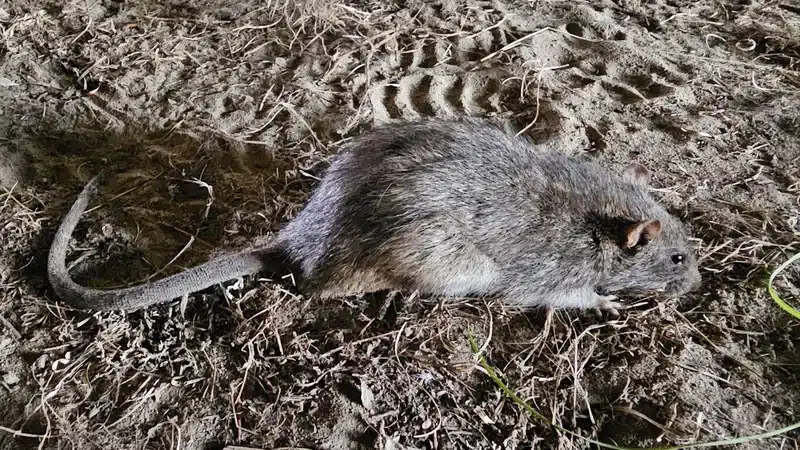You’ve probably seen it mentioned in online forums or heard it from a neighbor: baking soda can kill rats. This DIY solution sounds appealing because it uses a common household ingredient that most people consider harmless. But does baking soda actually work as a rat killer?
Reality Check
After dealing with hundreds of rat infestations across the DMV area since 2015, I’ve seen homeowners try countless DIY methods they found online. Baking soda comes up frequently in these conversations. Unfortunately, the reality is quite different from what many internet sources claim.
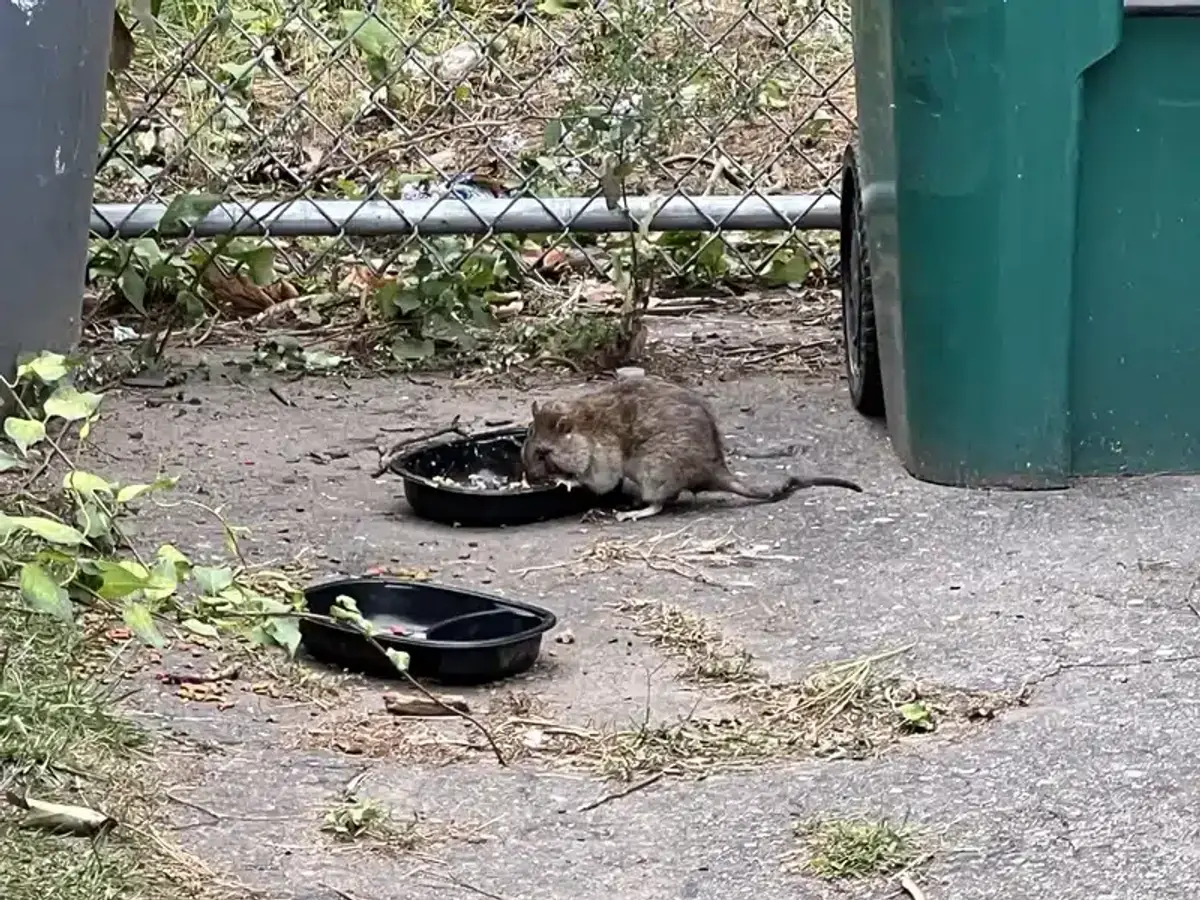
The Theory Behind Using Baking Soda to Kill Rats
The idea behind using baking soda to kill rats centers on a basic chemistry reaction. When sodium bicarbonate (baking soda) meets stomach acid, it produces carbon dioxide gas. The theory suggests that since rats cannot vomit, this gas builds up inside them until it causes fatal internal damage.
What does the science say?
This concept relies on the fact that rats anatomically cannot vomit due to their unique esophageal structure and reduced diaphragmatic musculature. The chemical reaction itself is real: NaHCO₃ + HCl → NaCl + H₂O + CO₂. At body temperature, one gram of baking soda produces about 260 milliliters of carbon dioxide gas.
However, there’s a significant gap between the chemistry and the claimed results when it comes to real-world rat control effectiveness.
Does Baking Soda Kill Rats? What Science Actually Shows
When you look at the actual toxicology data, the baking soda rat control method becomes much less convincing. According to the University of Hertfordshire Pesticide Properties Database, the lethal dose (LD₅₀) for sodium bicarbonate in rats is 4,220 mg/kg.
Baking Soda Kill Rate Reality
- Required Dose: A 300-gram rat needs 1.27 grams of pure baking soda for median lethal dose
- Bait Requirements: About 4 grams of one-third baking soda bait (roughly a heaping teaspoon)
- Rat Behavior Issue: Natural neophobia makes rats suspicious of unfamiliar food substances
- Consumption Problem: Rats rarely eat enough unfamiliar substances to reach toxic levels

Why Baking Soda May Not Kill Rats Effectively
Additionally, the fundamental premise has a flaw. While rats cannot vomit, they can expel intestinal gas through normal digestive processes. The claim that CO₂ becomes “trapped” inside them isn’t supported by digestive physiology research.
Why Homeowners Use Baking Soda for Rat Control
The appeal of baking soda as a rat control method is understandable. Homeowners dealing with rats in their attic or other areas of their home often feel desperate for a quick solution. They want something that seems less harsh than commercial rodenticides but more effective than just hoping the problem goes away.
Baking soda also appears cost-effective compared to professional treatments. Most people already have it in their kitchen, making it seem like a no-risk experiment. However, the time lost trying ineffective methods often allows rat populations to grow larger and more established.
Understanding the difference between Norway rats and roof rats can help homeowners realize why targeted, proven methods work better than one-size-fits-all DIY approaches.
Regulatory and Legal Concerns
Using baking soda as a rat killer raises some regulatory issues that most homeowners don’t consider. Under federal pesticide law (FIFRA), products making pest control claims must be registered with the EPA unless they qualify for specific exemptions.
Sodium bicarbonate doesn’t appear on the EPA’s minimum-risk pesticide ingredients list for rodent control. This means marketing it or selling it with rat-killing claims could violate state pesticide regulations in Virginia, Maryland, and DC.
No EPA-registered rodenticide products currently list sodium bicarbonate as an active ingredient. This absence from the official rodenticide registry suggests that extensive testing hasn’t demonstrated its effectiveness for rodent control.
Humane and Effectiveness Concerns
Even if baking soda could kill rats at the theoretical level, the method raises serious humane concerns. The proposed mechanism involves prolonged abdominal distress before death, which resembles slow suffocation from internal pressure.
A 2023 animal welfare assessment that evaluated various rodent control methods ranked snap traps, captive-bolt devices, and electrocution traps as the most humane options. Anticoagulant poisons scored poorly due to the prolonged suffering they cause. The study didn’t even evaluate baking soda, indicating its lack of recognition as a legitimate control method.
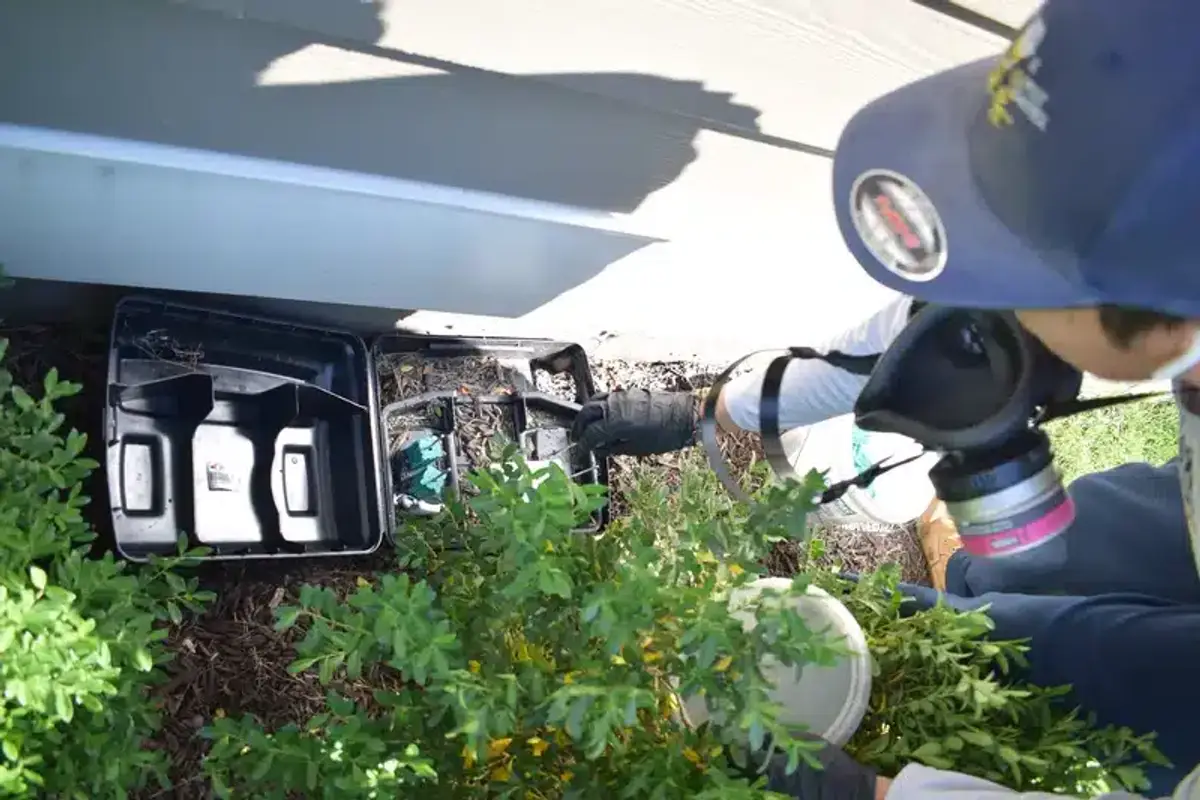
When rats do die from any cause, they often retreat to inaccessible areas like wall voids. This creates the same odor and secondary pest problems that homeowners experience with anticoagulant baits, but without the proven effectiveness.
Proven Rat Control Methods That Kill Rats Effectively
Rather than experimenting with unproven methods like baking soda, homeowners get better results from integrated approaches that address the root causes of rat problems. Our four-step rodent protocol has proven effective across hundreds of infestations in the DMV area.
| Method | Effectiveness | Best Use Case |
|---|---|---|
| Baking Soda | Very Low | Not recommended |
| Snap Traps | High | Indoor infestations |
| Rodenticide Bait | Very High | Large infestations |
| Exclusion Work | High | Prevention & maintenance |
Step 1: Exclusion and Sanitation
The foundation of effective rat control involves making your property less attractive to rodents. This means sealing entry points with materials like galvanized hardware cloth, eliminating food sources, and reducing harborage areas.
Rats can squeeze through gaps as small as a quarter-inch. Identifying and sealing these entry points prevents new rats from entering while you address the existing population. However, we typically don’t start with exclusion because you don’t want to trap rats inside your walls.
Step 2: Strategic Rat Bait Placement
EPA-registered rodenticides remain the most reliable method for eliminating established rat populations. First-generation anticoagulants like warfarin and diphacinone are available in consumer packaging, while stronger options require professional application.
The key is strategic placement of tamper-resistant bait stations in areas where rats are active. This requires understanding different rat species and their behavioral patterns.

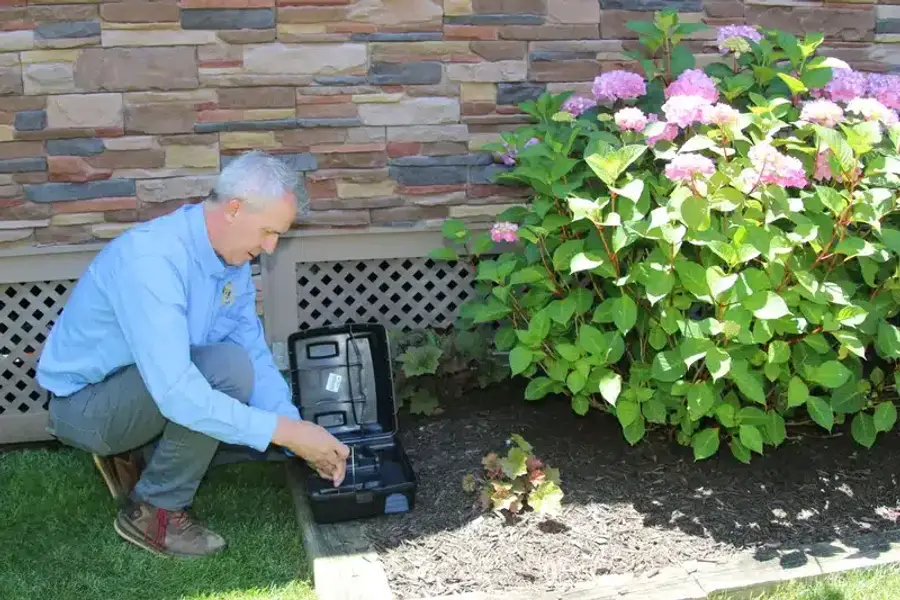
Step 3: Mechanical Traps
Snap traps provide quick, humane kills when properly sized and placed. For indoor use, especially when dealing with rats rather than mice, snap traps often work better than bait stations because they prevent rats from dying in inaccessible areas.
Modern electric and CO₂ traps offer additional humane options for homeowners who want alternatives to traditional snap traps. These devices provide instant kills with minimal stress to the animal.
Step 4: Ongoing Rat Control Monitoring
The biggest mistake homeowners make is stopping control efforts too early. Rats reproduce rapidly, and a few surviving individuals can quickly rebuild the population.
Essential Rat Control Maintenance
- Tri-Annual Inspections (Three Times Per Year): Check bait stations, traps, and exclusion points three times per year
- Fresh Bait Rotation: Replace old rodenticide bait to maintain effectiveness
- Entry Point Monitoring: Inspect sealed areas for new gaps or damage
- Population Assessment: Look for new signs of rat activity before problems escalate
Our tri-annual maintenance schedule (three times per year) ensures that rat problems don’t return. This ongoing approach addresses new rats that might enter the property and maintains the protective measures put in place during the initial treatment.
When to Call Pest Control Professionals
While some homeowners successfully handle minor rodent issues on their own, certain situations call for professional intervention. Large infestations, ongoing problems despite DIY efforts, and health concerns related to rat presence all warrant expert help.
Licensed pest control technicians have access to more effective products and understand the behavioral patterns that make treatments successful. We also know how to apply control methods in ways that minimize risks to non-target animals and family members.
In areas like Old Town Alexandria, where rat problems are particularly common due to older construction and urban density, professional treatment often proves more cost-effective than repeated DIY attempts.
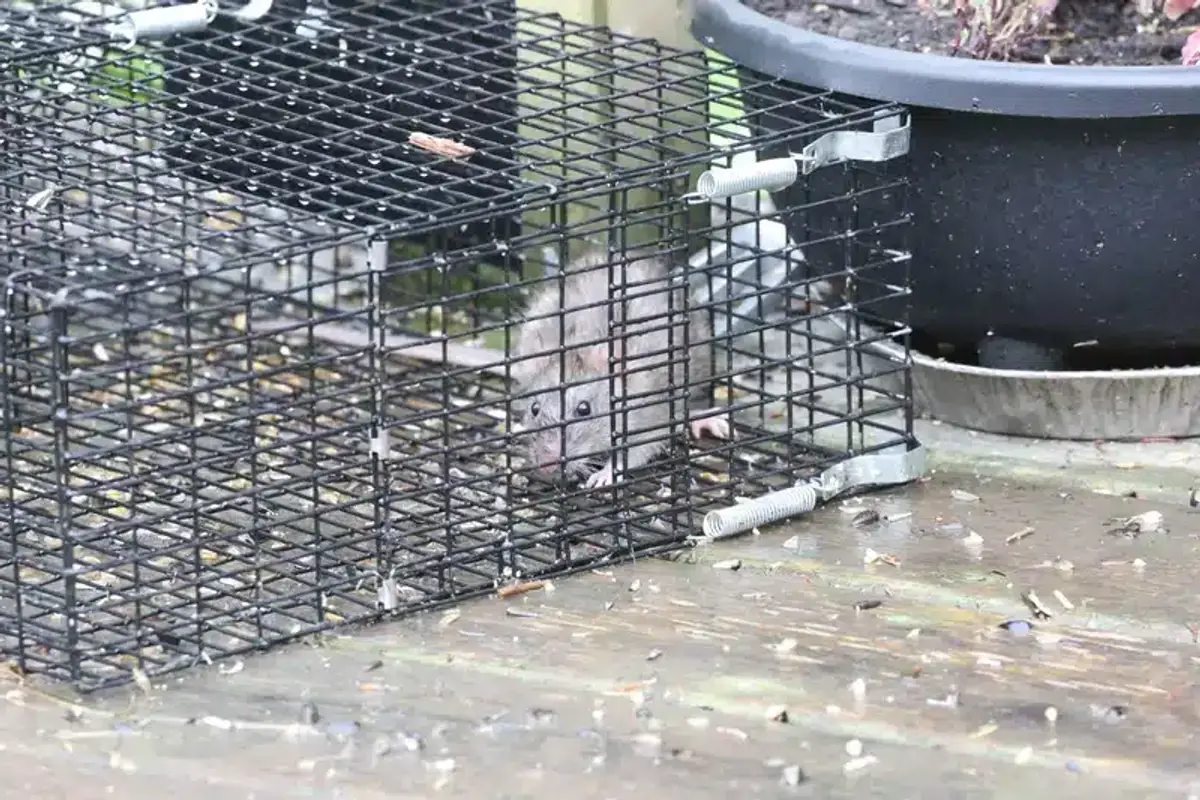
The Bottom Line: Will Baking Soda Kill Rats?
Final Verdict
The scientific evidence doesn’t support claims that baking soda kills rats effectively. While the chemistry behind the theory exists, real-world effectiveness requires rats to consume amounts they’re unlikely to eat voluntarily. No peer-reviewed studies demonstrate population reduction using sodium bicarbonate.
The time and effort spent mixing baking soda baits would be better invested in proven control methods. Snap traps, proper sanitation, exclusion work, and strategic use of registered rodenticides deliver the results that baking soda simply cannot provide.
Additionally, attempting to use baking soda as a rodenticide may raise legal concerns since it’s not registered for this purpose. Homeowners seeking effective, legitimate rat control have many better options available.
If you’re dealing with a rat problem, focus on methods that actually work. Start with exclusion and sanitation, use properly placed traps or baits, and consider professional help for persistent issues. Your time and peace of mind are worth more than experimenting with internet remedies that don’t deliver results.
Call 703-683-2000 or email info@bettertermite.com
Frequently Asked Questions
Does baking soda kill rats instantly?
+
No, baking soda does not kill rats instantly or reliably. The theory suggests it creates gas buildup, but rats would need to consume large amounts that they typically avoid. Even in ideal conditions, this method lacks scientific validation and would cause prolonged suffering rather than quick death.
How much baking soda would it take to kill a rat?
+
According to toxicology data, a 300-gram rat would need to consume about 1.27 grams of pure baking soda to reach the median lethal dose. This translates to roughly a heaping teaspoon of bait that's one-third baking soda, which rats are unlikely to eat voluntarily when other food sources are available.
Is baking soda poisonous to rats?
+
Baking soda has relatively low toxicity to rats, with a high lethal dose requirement. While it can theoretically cause harm in large quantities, it's not considered an effective poison for rodent control. Rats would need to consume unrealistic amounts for it to be lethal.
What kills rats immediately?
+
Snap traps, electric traps, and CO₂ chambers provide the quickest, most humane kills for rats. These mechanical methods are instant and don't involve poison that could cause prolonged suffering or secondary poisoning risks to other animals.
Why don't professional pest controllers use baking soda?
+
Professional pest controllers don't use baking soda because it lacks proven effectiveness and isn't registered as a rodenticide with the EPA. Licensed technicians rely on methods backed by scientific research and regulatory approval to ensure reliable results for their customers.
Can rats taste baking soda in bait?
+
Rats can likely detect baking soda's taste and texture in bait mixtures. Their natural neophobia (fear of new foods) makes them suspicious of unfamiliar substances, especially when mixed with their preferred foods. This behavioral trait further reduces the likelihood of consuming effective amounts.
Are there legal issues with using baking soda to kill rats?
+
Yes, using or marketing baking soda specifically to kill rats could violate federal and state pesticide regulations. Since it's not EPA-registered as a rodenticide, making pest control claims about it may be illegal in Virginia, Maryland, and DC.
What's the most effective DIY rat control method?
+
The most effective DIY approach combines exclusion (sealing entry points), sanitation (removing food sources), and properly placed snap traps. This integrated method addresses both immediate population control and long-term prevention without relying on unproven remedies.
With five years of hands-on experience in the pest control industry, George Schulz is a registered technician with the Virginia Pest Management Association and a proud third-generation professional in a family business that's been protecting homes for over 57 years. He manages and trains a team of service pros while also leading internal research efforts—recently spearheading a deep-dive review of thousands of documents on pest control materials to hand-pick the most kid and pet friendly, most effective solutions tailored specifically for homes in the DC metro area.
